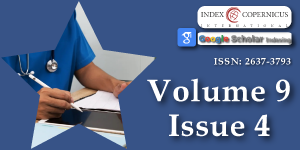Coping Strategies and Resilience of grief in Individuals who lost a Relative in a Traffic Accident.
Main Article Content
Abstract
Grief is a daily experience worldwide, with approximately 87,000 deaths occurring each year. According to the National Institute of Development Information (INIDE), between 2020 and 2021, 68,680 deaths were recorded in Nicaragua alone, The Ministry of Health reports that grief generates emotional challenges such as stress, anxiety, and depression. The overwhelming nature of losing a loved one can deeply affect individuals. The objective of this research is to identify Coping Strategies and Resilience of grief in people who lost a family member due to a traffic accident.
This qualitative phenomenological study included six participants who experienced the loss of a family member due to a traffic accident. Data were collected using snowball sampling and unstructured interviews, achieving information saturation within the 28 to 40 age group.
People who lose a family member in a traffic accident report a very difficult grieving process to face due to the impact of unexpected news, which in some cases was witnessed firsthand, but through Participants used strategies such as maintaining daily routines, engaging in work, exercising, visiting tourist sites and restaurants, and attending church. These activities facilitated emotional adjustment.
It involves emotional pain as the need for acceptance, depending on individual interpretation and adaptation to loss of a loved one. Participants consistently reported that maintaining their daily routines helped them cope with grief. Self-reflection and exploring new places offered mental clarity and facilitated perspective shifts during mourning. Also, the support of the Church as a method of refuge and socialization with friends and family, helping distraction and emotional well-being in the grieving process, proved significantly helpful for individuals in similar situations, in addition to understanding.
Article Details
Copyright (c) 2025 López AS, et al.

This work is licensed under a Creative Commons Attribution 4.0 International License.
1. Panel on Guidelines for the Prevention and Treatment of Opportunistic Infections in Adults and Adolescents With HIV. Guidelines for the prevention and treatment of opportunistic infections in adults and adolescents with HIV. National Institutes of Health, HIV Medicine Association, and Infectious Diseases Society of America. Available from: https://clinicalinfo.hiv.gov/en/guidelines/adult-and-adolescent-opportunistic-infection
2. Falkinham J. Environmental sources of nontuberculous mycobacteria. Clin Chest Med. 2015;36(1):35-41. Available from: https://doi.org/10.1016/j.ccm.2014.10.003
3. Andreani J, Barrassi L, Davopust B, La Scola B. Evidence of an environmental reservoir for emergent Mycobacterium colombiense. New Microbes New Infect. 2020;35:100666. Available from: https://doi.org/10.1016/j.nmni.2020.100666
4. Yu X, Jiang W. Mycobacterium colombiense and Mycobacterium avium complex causing severe pneumonia in a patient with HIV identified by a novel molecular-based method. Infect Drug Resist. 2021;14:11-6. Available from: https://pmc.ncbi.nlm.nih.gov/articles/PMC7797356/
5. Tang M, Zeng W, Qiu Y, Fang G, Pan M, Li W, et al. Clinical features of rare disseminated Mycobacterium colombiense infection in nine patients who are HIV-negative in Guangxi, China. Int J Infect Dis. 2023;128:321-4. Available from: https://pubmed.ncbi.nlm.nih.gov/36642210/
6. Barretto AR, Felício JS, Sales LHM, Yamada ES, Lopes ML, da Costa ARF. A fatal case of pulmonary infection by Mycobacterium colombiense in Para State, Amazon Region, Brazil. Diagn Microbiol Infect Dis. 2016;85(3):344-6. Available from: https://doi.org/10.1016/j.diagmicrobio.2016.02.011
7. Pennington K, Vu A, Challener D, Rivera CG, Shweta FNU, Zeuli JD, et al. Approach to the diagnosis and treatment of non-tuberculous mycobacterial disease. J Clin Tuberc Other Mycobact Dis. 2021;24. Available from: https://doi.org/10.1016/j.jctube.2021.100244





